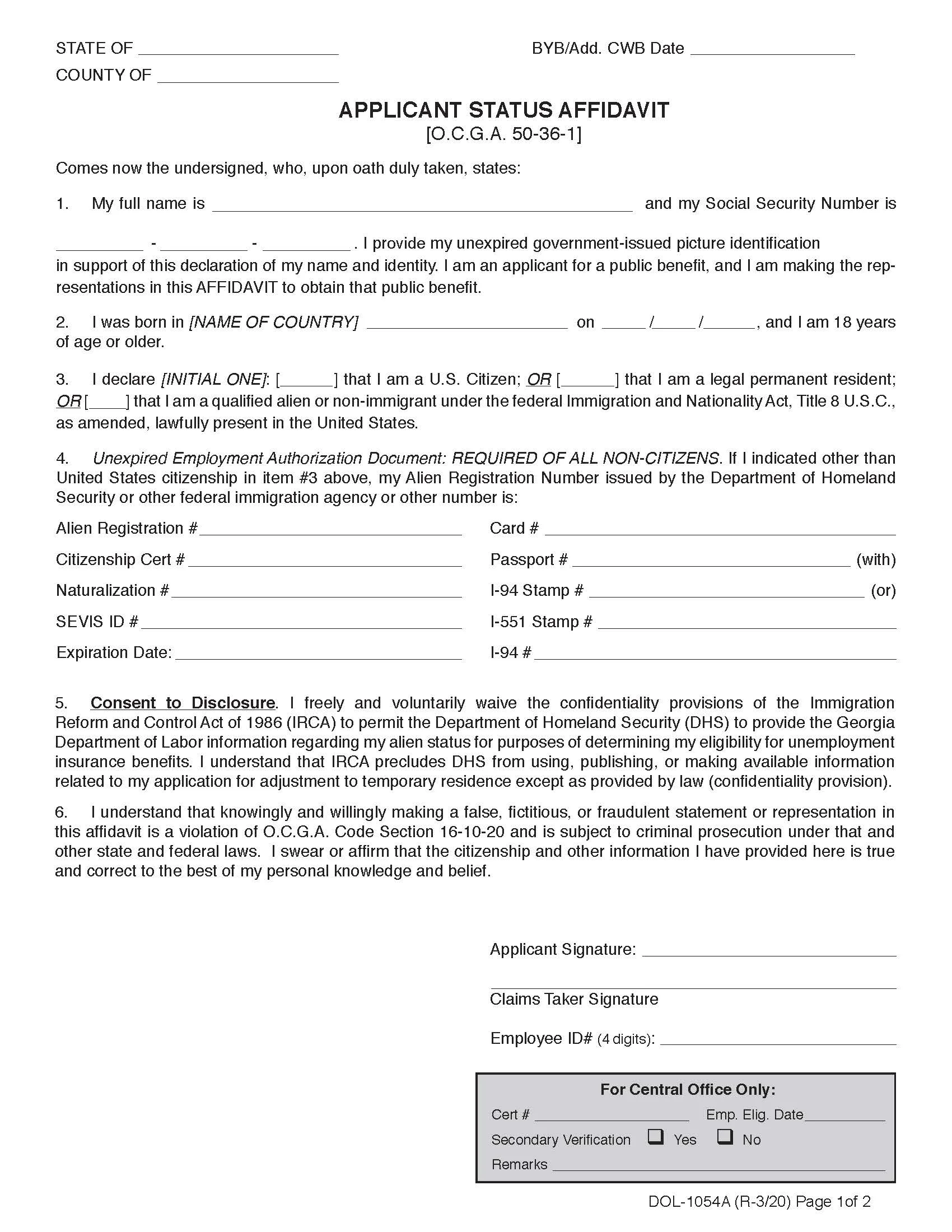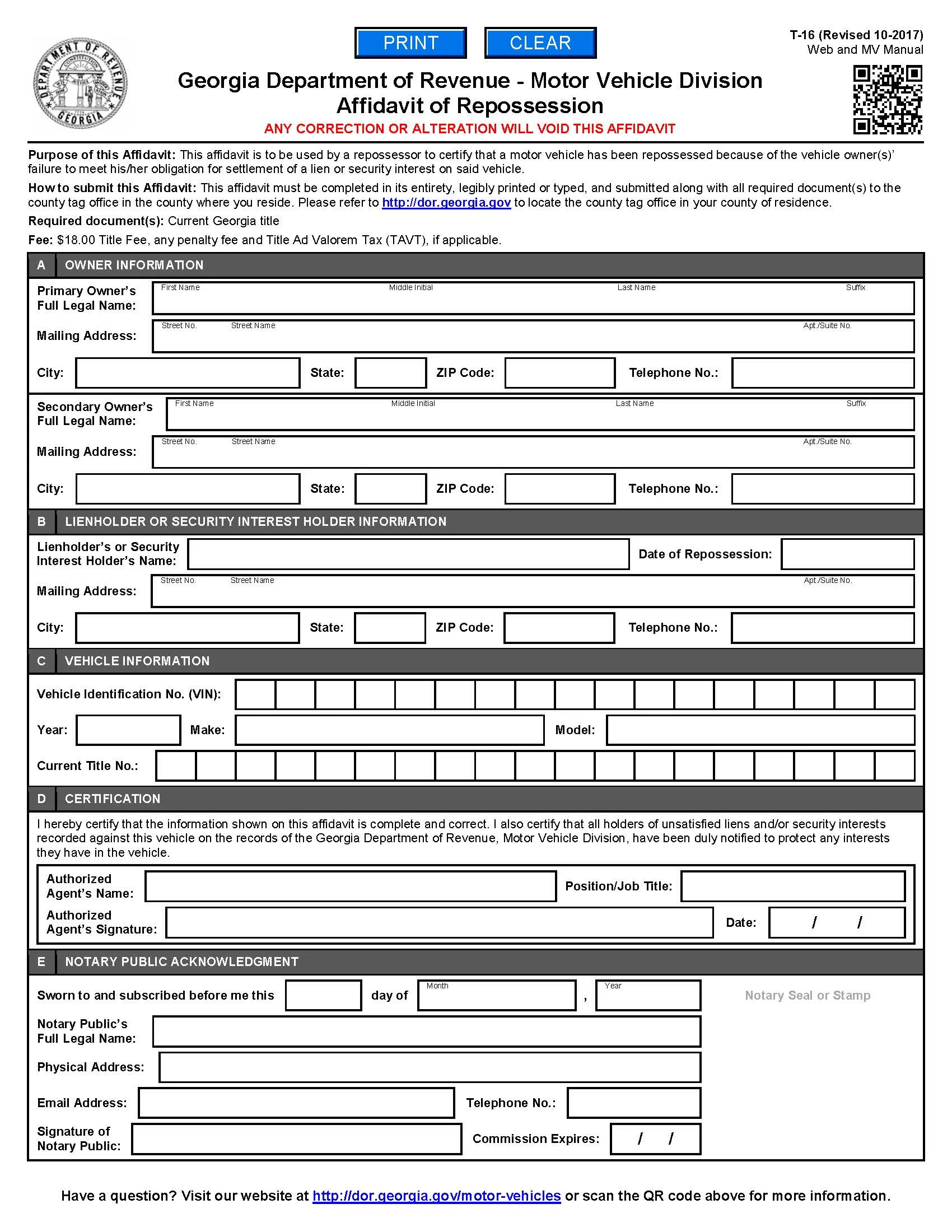Georgia Affidavit Forms
Georgia affidavit forms are used in Georgia to create a written statement that is made under oath and is usually used as evidence in court. Georgia affidavit forms could be needed in such circumstances as backing up a legal claim or showing someone’s identification.
Some common types of Georgia affidavit forms include an affidavit of residency, an affidavit of affixture, and an affidavit of identity. The legal templates provided by Georgia authorities include Applicant Status Affidavit (DOL-1054A), One and the Same Affidavit (Form T-227), and Repossession Affidavit (Form T-16).
Georgia Official Affidavit Forms
Affidavit forms confirm that a particular declaration of facts or written statement is true and correct. That’s why these forms must be signed before a notary public. However, some official documents require others to sign the form to prove that specific facts stated in the affidavit are accurate.

Georgia Applicant Status Affidavit (DOL-1054A) is used in Georgia by employers to verify an employee’s eligibility to work in the United States. The form requires employees to provide information about their immigration status and employment history. The affidavit explicitly requests the applicant’s name, location, date of birth, and social security number, as well as an affirmation of whether they are a citizen of the United States or a permanent resident.

Georgia One and the Same Affidavit (Form T-227) is used in Georgia to legally declare that two or more names used by an individual belong to the same person. This form is often used in situations where an individual has changed their name or has multiple names due to marriage, divorce, or other reasons. The form requires the individual’s legal name, any other names used, and signature. By signing the form, the individual attests that the names listed belong to the same person.

Georgia Repossession Affidavit (Form T-16) is a legal document used to certify that a repossession has occurred following Georgia law. This form is typically used by a creditor, such as a bank or a lending institution, after taking possession of a vehicle or other property due to non-payment by the debtor. The form requires detailed information about the repossessed property, including the make, model, identification number, and reason for the repossession.